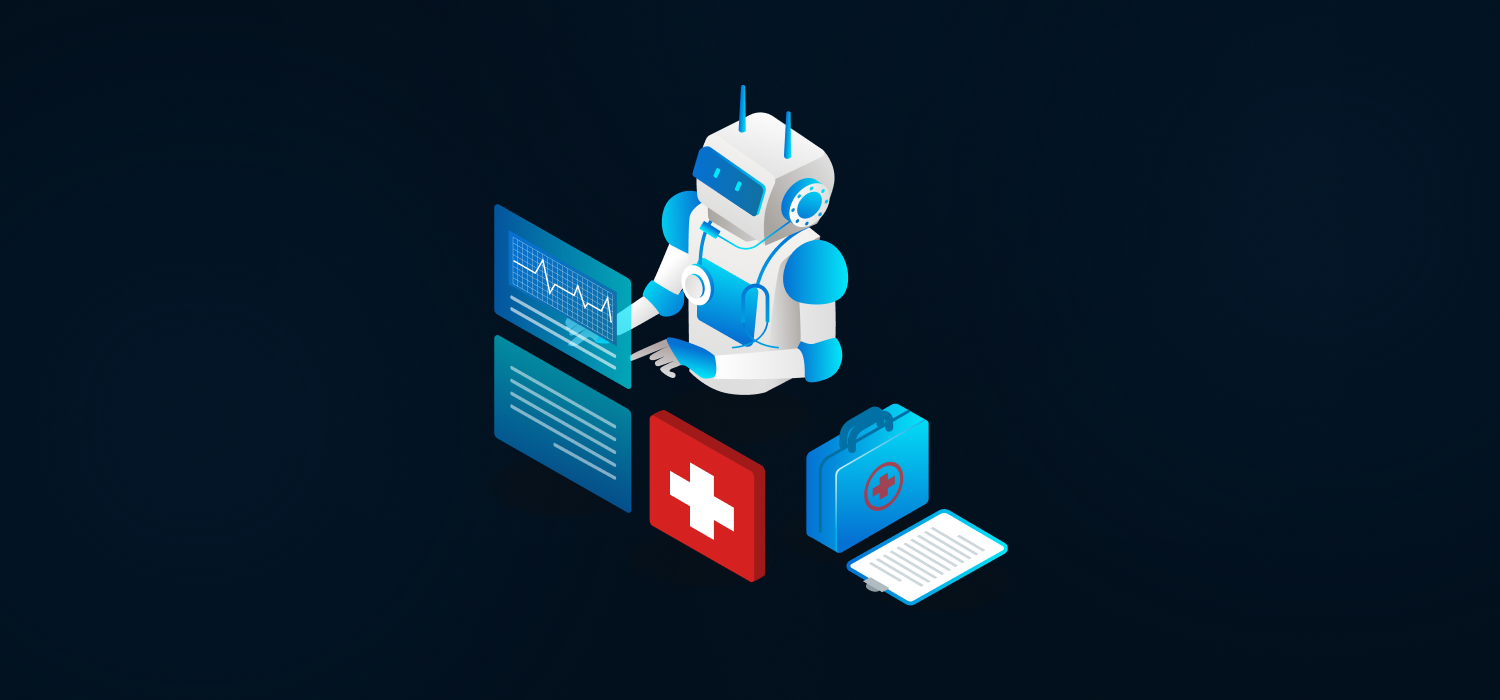RPA in Healthcare in USA: Optimizing Operations and Patient Outcomes
Robotic Process Automation empowers USA healthcare providers to automate routine tasks, enhancing efficiency and patient care quality. By deploying software bots to manage administrative and clinical workflows, RPA in healthcare addresses escalating operational costs and complex regulations.
The healthcare RPA market is projected to reach $3.97 billion by 2029, growing at a CAGR of 14.8%. (Flobotics)
RPA Applications in USA Healthcare
RPA in healthcare targets repetitive, rule-based tasks, integrating with the existing systems. Implementation involves process mapping, vendor selection, and phased rollouts to ensure seamless adoption.
Core Applications
- Patient Onboarding: Bots collect and verify patient information, auto-populating forms in EHRs, reducing intake time.
- Supply Chain Management: RPA tracks medical supplies, automates reordering, and monitors expiration dates, minimizing waste.
- Insurance Pre-Authorization: Bots verify coverage and submit pre-authorization requests, speeding up approvals
- Appointment Follow-Ups: By delivering post-visit guidance and feedback requests, automated systems boost patient interaction.
- Credentialing Management: RPA verifies provider licenses and certifications, ensuring compliance with minimal manual effort.
Benefits of Healthcare Automation USA
Robotic Process Automation in USA healthcare boosts patient outcomes, optimize operations, improve regulatory compliance, enhance scalability, and increased staff satisfaction. These benefits strengthen healthcare delivery and operational resilience.
Automation has reduced administrative errors by 30%, increased clinical procedure efficiency by 25%, and improved patient satisfaction by 20%. (ResearchGate)
Boosting Patient Outcomes
RPA enhances patient experiences by reducing wait times and improving access to care. Automated onboarding ensures accurate patient data, minimizing errors in treatment plans. Follow-up automation reinforces adherence to medications. By handling administrative tasks, RPA allows clinicians to focus on diagnostics and patient interaction.
Patient-Centric Benefits
- Quicker access to care through streamlined onboarding.
- Enhanced treatment adherence via automated reminders.
- Reduced errors in patient records for safer care.
Optimizing Operations
RPA in healthcare in USA drives cost efficiency and scalability. Supply chain bots reduce stock shortages, ensuring critical supplies are available. Credentialing automation cuts down verification time, enabling faster onboarding of providers. These efficiencies allow hospitals to manage growing patient volumes without proportional staff increases.
Improved Regulatory Compliance
Healthcare automation USA ensures adherence to complex regulations like HIPAA by automating compliance-related tasks, reducing human error.
- Audit Trail Creation: Bots log all actions, providing accurate records for audits, minimizing non-compliance risks.
- Real-Time Monitoring: RPA flags discrepancies in billing or data handling, ensuring adherence to federal and state guidelines.
- Impact: Reduces penalties, which cost healthcare organizations millions annually, and streamline reporting processes.
Enhanced Scalability
RPA allows healthcare providers to handle growing patient volumes without proportional resource increases.
- Volume Flexibility: Bots manage spikes in tasks, like appointment scheduling during flu season, without additional staff.
- Rapid Deployment: New processes, such as telehealth support, can be automated quickly.
- Impact: Enables higher throughput in high-demand periods, supporting expansion without operational strain.
Increased Staff Satisfaction
By automating repetitive tasks, RPA in healthcare reduces administrative burdens, allowing staff to focus on meaningful work.
- Reduced Burnout: Clinicians spend less time on paperwork, alleviating the stress of healthcare workers.
- Empowered Roles: Staff shift to patient-focused tasks, enhancing job fulfillment.
- Impact: Improves retention rates, addressing the 15% annual turnover in healthcare, and fosters a more engaged workforce.
Implementation Hurdles
Legacy System Compatibility
Legacy systems like older EHRs lack modern APIs, complicating RPA integration. Data silos across departments and performance bottlenecks hinder automation. Middleware tools, phased pilot programs, and vendor collaboration enable smoother integration with systems
Data Privacy Concerns
HIPAA-regulated healthcare data demands stringent security. Auditability and third-party vendor vulnerabilities add challenges. Solutions include AES-256 encryption, role-based access controls to limit data exposure, and pilot testing to identify gaps.
Process Complexity
Healthcare processes, like billing or patient onboarding, often involve complex, non-standardized workflows, making automation difficult. Detailed process mapping identifies automatable tasks, and flexible RPA platforms adapt to variability.
High Initial Costs
Deployment of healthcare automation USA involves a significant upfront investment. Start with small-scale pilots targeting high-impact tasks reduces costs. Cloud-based RPA lowers infrastructure expenses, and vendor financing options ease budget constraints.
Staff Resistance and Training Needs
Healthcare staff often resist RPA due to fears of job displacement or unfamiliarity with automation. Clinicians and administrators may lack the technical skills to interact with bots. Training programs and clear communication build acceptance.

Conclusion
RPA in healthcare USA is transforming the industry by automating routine tasks such as patient onboarding and claims processing. By minimizing manual effort, it helps reduce errors and improve overall efficiency, allowing staff to focus more on patient care.
It also enhances outcomes by enabling faster and more accurate service delivery. As RPA integrates with AI for predictive analytics and cloud platforms for scalability, providers can further streamline operations while ensuring compliance and prioritizing patient well-being.
FAQs
How does RPA function in USA healthcare?
In the USA healthcare, RPA automates repetitive processes such as patient onboarding, supply chain tracking, and pre-authorizations. By deploying software bots within existing systems, it streamlines workflows, minimizes manual errors, enhances accuracy, and improves overall operational efficiency.
How does RPA enhance patient outcomes?
RPA accelerates patient onboarding, automates follow-up reminders, and minimizes errors in medical records. These improvements strengthen treatment adherence, enhance data accuracy, and free clinicians to dedicate more time to delivering personalized, patient-centered care.
What operational tasks does RPA streamline?
RPA streamlines healthcare operations by optimizing supply chain management, insurance pre-authorizations, and credentialing processes. By automating these workflows, it reduces administrative burden, speeds up verification, and allows staff to focus on delivering efficient, high-quality patient care.
What obstacles exist in RPA deployment?
Challenges in healthcare RPA include integrating with legacy systems and maintaining strict data privacy. Implementing pilot programs, combined with robust security measures like strong encryption, helps providers adopt automation safely and efficiently.

 contact
contact

 By
By 


